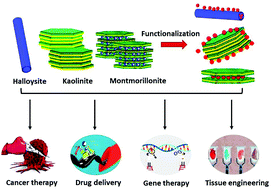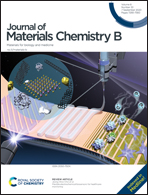Nanoclay-based drug delivery systems and their therapeutic potentials
Abstract
Safe, therapeutically effective, and patient-compliant drug delivery systems are needed to design novel tools and strategies to combat the deadliest of diseases such as cancer, SARS, H7N9 avian influenza, and dengue infection. The major challenges in drug delivery are cytotoxicity, poor biodistribution, insufficient functionality, ineffective drug incorporation in delivery devices, and subsequent drug release. Clay minerals are a class of nanolayered silicates that have good biocompatibility, high specific surface area, chemical inertness, colloid, and thixotropy, and are attractive practical and potential nanomaterials in medicine. These properties enable the usage of nanoclays as drug carriers for the delivery of antibiotics, antihypertensive drugs, anti-psychotic, and anticancer drugs. The review examines the latest advances in nanoclay-based drug delivery systems and related applications in gene therapy and tissue engineering. Clay minerals, particularly montmorillonite, kaolinite, and halloysite are used to delay and/or target drug release or even improve drug dissolution due to their surface charge. Chemical modification of clay minerals such as intercalation of ions into the interlayer space of clay minerals or surface modification of clay minerals is a strategy to tune the properties of nanoclays for the loading and release of a drug. The modified nanoclay can take up drugs by encapsulation, immobilization, ion exchange reaction, or electrostatic interactions. Controlled drug release from the drug–clay originates from the incorporation and interactions between the drug and inorganic layers, including electrostatic interactions and hydrogen bonding. Montmorillonite has proven non-toxic through hematological, biochemical, and histopathological analyses in rat. Montmorillonite can also act as a potent detoxifier. Halloysite nanotubes can bind synthetic and biological components such as chitosan, gelatin, and alginate innate nanocarriers for the improved loading and controlled release of drugs, proteins, and DNA. The peculiar properties of clay nanoparticles lead to promising applications in drug delivery, gene delivery, tissue engineering, cancer and stem cell isolation, and bioimaging.

- This article is part of the themed collection: Journal of Materials Chemistry B Recent Review Articles


 Please wait while we load your content...
Please wait while we load your content...